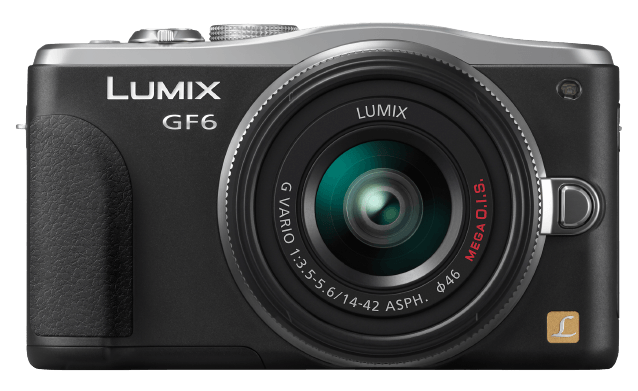Panasonic Lumix DMC-GF6 Specs and Scores

The Panasonic Lumix DMC-GF6 receives a score of 45/100 for its general specifications. Announced on April 9, 2013, this mirrorless camera launched at $680. With dimensions of 111 x 65 x 38mm and weighing 323g (0.71lbs), the camera offers a compact and lightweight design.
Though the GF6’s specifications were competitive in 2013, they now struggle to stand out in today’s market. Many newer cameras offer more advanced features and better performance. Despite this, the Lumix DMC-GF6 remains a decent option for those seeking a simple, easy-to-use camera.
Panasonic Lumix DMC-GF6 Overview and Optics
The optics of the Panasonic Lumix DMC-GF6 receive a score of 43 out of 100. This camera boasts 16 megapixels, a shooting speed of 4.2, and a CMOS sensor. The Venus Engine FHD processes images, and the DXOMARK sensor score is 54. With a Micro Four Thirds sensor size and a Micro 4/3 lens mount, this camera does not have image stabilization and uses a 4:3 aspect ratio.
Comparing these specifications to today’s market, the Panasonic Lumix DMC-GF6 falls short in some areas. The 16-megapixel resolution is adequate but not exceptional, and the shooting speed of 4.2 is slower than many competitors. The absence of image stabilization could be a drawback for some users. However, the Micro Four Thirds sensor size and lens mount offer versatility in lens selection.
The Panasonic Lumix DMC-GF6 has modest optics specifications, making it suitable for casual photography but perhaps not for professional or advanced enthusiasts.
Panasonic Lumix DMC-GF6 Video Performance
The Panasonic Lumix DMC-GF6 received a video score of 56 out of 100. This camera offers Full HD video resolution with a maximum dimension of 1920 x 1080 pixels. The maximum video frame rate is 60fps, providing smooth and clear video footage. However, the camera does not have built-in time-lapse functionality.
Considering the current market, the Lumix DMC-GF6’s video capabilities are decent but not exceptional. Many modern cameras offer 4K video resolution and additional features, such as time-lapse functionality. With its 56 video score, the DMC-GF6 may not be the top choice for those prioritizing video performance.
The Panasonic Lumix DMC-GF6 has satisfactory video capabilities but falls short compared to other cameras on the market. It is a suitable option for casual videographers but may not meet the demands of professionals or enthusiasts seeking advanced video features.
Panasonic Lumix DMC-GF6 Features and Benefits
The Panasonic Lumix DMC-GF6 features a score of 57/100. This score highlights the camera’s capabilities in terms of its various features. The GF6 comes with a 3-inch screen, which has a resolution of 1,040,000 dots. This high-resolution touchscreen allows for easy navigation and control of the camera’s settings. Additionally, the flip screen feature enables users to capture images from different angles and perspectives.
In today’s competitive market, the GF6 holds its own with its Wi-Fi connectivity that enables wireless transfer of images and remote control of the camera. However, the absence of GPS and Bluetooth features might be a drawback for some users who value location data and seamless device connectivity.
Taking all the specifications into account, the Panasonic Lumix DMC-GF6 offers a decent range of features that cater to various photography enthusiasts. While it may not be the top choice for those seeking cutting-edge technology, it remains a reliable option for users who prioritize user-friendly controls and connectivity options.
Panasonic Lumix DMC-GF6 Storage and Battery
The Panasonic Lumix DMC-GF6 storage and battery score is 21/100. The camera has one memory card slot that accepts SD, SDHC, and SDXC cards. In today’s market, this is fairly standard for most cameras. However, having only one slot might be limiting for some users who require more storage options.
The battery life of the Panasonic Lumix DMC-GF6 is 340 shots per charge, which is average compared to other cameras in its class. The camera uses a DMW-BLG10E battery type, but it does not support USB charging, which is a drawback for those who prefer convenient charging options.
Taking these factors into account, the Panasonic Lumix DMC-GF6 has an adequate storage and battery performance. However, it could benefit from improvements such as additional memory card slots and USB charging capabilities to better meet the needs of modern users.
